
What is POV?
Point of View. The person or persons whose perspective a story is told from.
What is Second Person POV?
"In second person point of view the reader is part of the story. The narrator describes the reader's actions, thoughts, and background using "you." It's all about how you look at it." —Merriam-Webster
First, Second, And Third POV Pronouns
Pronouns:
First Person POV: I, me, we
Second person POV: You, Yours, Yourself
Third Person POV: They, he, she
Omniscient: Typically, they, he, she, but there are exceptions
If you are trying to use the pronoun rules to discern your POV type, remember that dialogue is exempt. Most often, the dialogue will be written in the first person regardless of the POV type.
Want to learn more about POV? Check out Everything You Need To Know About First Person Point of View to find out more!
Why Is Second Person POV So Confusing?
Second Person POV has to be the most infuriating, confusing and misunderstood points of view—although that opinion may change when I get to omniscient POV. Until I started really looking into it, I took the basic definition as gospel. Second person is when the writer introduces the reader to the story through the pronouns you, your, and yourself. Sounds easy, but it's not.
Second Person POV and Breaking The Fourth Wall

Breaking the fourth wall is when a performer addresses the audience. It’s a term that’s been carried from the theatre where three theoretical walls enclosed the stage, and the fourth, imaginary wall was between the performers and the audience. To break the fourth wall in the theatre, the performer would literally address the audience sitting in front of them. Today the fourth wall would more aptly be the television or computer screen.
“Second person is not the same as breaking the fourth wall, when the protagonist or narrator addresses the audience.”
—Google snippet from Editors Quill
The internet has informed me that breaking the fourth wall and second person POV is not the same thing. That’s because when the writers break the fourth wall—addressing the audience directly—the ‘you’ they reference is not the main POV character in the story. When I search for movies and TV shows that use second person POV, I am assured that there are none. At best, it would have to be made from found footage, and even then, it would not truly be second person. Instead, it would be breaking the fourth wall. Which is not the same thing, or is it?
“In literature, second person point of view breaks the fourth wall by directly addressing the reader with the pronoun “you.” It goes a step further by creating an interactive literary experience, bringing the reader into the story.”
Epistolary Novels and Second Person POV
When I was a kid, I read some Choose Your Own Adventure books, but otherwise second person POV has alluded me. The only one I can remember reading was Lady Susan, by Jane Austen. The internet disagrees with me; Lady Susan is not in second person because it's epistolary—a literary work written via letters or other documents.
“An epistolary is always first person narration because it's the protagonist/s sharing their story from their perspectives.”
—Google snippet from Bookaholic Belle
So, apparently, an epistolary cannot be second person because you, the reader, are not the POV character. Yet more confusion ensues as a result of this decree. If letters are written from one person to another as a literary device. Each writer referring to the receiver of the letters as You, Your, and Yourself. Doesn’t that make the reader both the main character receiving the letters and the main character sending them? It’s a conundrum.
You by Caroline Kepnes and You by Second Person POV
Again, I have been assured by multiple sources that the novel You, by Caroline Kepnes is written in second person POV. Joe, the main character, regularly addresses the audience head-on, using the pronouns ‘you, yours, and yourself’; thus, we have second person. If you are familiar with You, then you will understand my confusion. It is a story told from the first person perspective of Joe, whose creepy internal narrative follows his obsession with ‘you.’
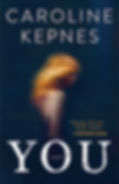
“Kepnes uses the second person narrator for the entirety of the novel which takes you deep inside the mind of a stalker and murderer.”
“Easily, the most interesting thing about this book is that it is told in second person.”
“What sets Caroline Kepnes’s book You apart is that it’s written in the second person. The POV is all about Joe talking directly to Beck and describing what it’s been like to meet her, become interested in dating her, and then falling in love with her.”
“I know there are different kinds of second person, and for me, the kind you see the most encourages the reader to be “you.” With a narratee, “you” is a character in the story.”
Caroline Kepnes is not breaking the fourth wall, but the primary POV character is Joe, not the titular ‘you’, and the ‘you’ in the story isn’t even the reader. It’s Beck. So why is this narrative classified as second person instead of deep first with a stream-of-conscious writing style? I have no answers for you, and I’ve looked, oh how I’ve looked. The closest I came to a solution was a Reddit thread where commenters decided that You is not second person. Something that I can’t use as an actual source, even though it seems better researched than many of the articles I’ve read.
As it is, I’ve rewritten this blog post at least three times and expended thousands of words trying to unpack the bottomless spiral of confusion this narrative seems to bring. I have a theory that people don’t avoid second person because it’s hard or boring. Instead, writers avoid it because anything more than a cursory glance into the writing type will leave you gibbering in a dark corner, regretting every choice you ever made that led you up to this point. I’m writing this from that very corner.
The Answer- Kind Of
To attempt to navigate the murky water of second Person POV, I have decided to divide the various and varied interpretations of this POV type into two camps. The second person POV purist and the second Person POV rebels.
The Second Person Point of View purist
Second Person Point of View purists argue that point of view indicates the person whose perspective the story is told from. The narrative lens of the text has to come from the primary character. So simply utilizing the pronoun ‘you’ doesn’t cut it.
“You laugh and you shake your head and you’re listening to me at the point when most people drift, go into their phone. And you’re pretty and you ask, “Why?””
—You, Caroline Kepnes
Here is an example of a purist second person POV (not an actual term, but one that I made up, that I don't think will catch on, so don't quote it):
"And you know the darkness beyond despair, just as intimately as you know the soaring heights. Because in this and all universes, there is balance. You can't have the one without facing the other. And sometimes you think you can take it because the joy is worth the despair, and sometimes you know you can't take it and how did you ever think you could?"
—Challenger Deep, by Neal Shusterman.
Second Person Point of View Rebels
In opposition to the second person, POV purists are the rebels. The rebels who don't know that they are rebels but are, nonetheless. These guys think that addressing the audience in any way, shape, or form—that isn't dialogue—classifies the writing as second person. The fourth wall is broken. Therefore it's second person. This is a much simpler interpretation, much easier to manage. Address the audience using you, your, and yourself, and you've achieved second person.
Through a more laidback approach to second person POV, the potential for the POV type opens and becomes more flexible. Taking a notoriously limiting narrative voice and providing more opportunities for the reader to play various roles in the narrative.
The narrative's main character and the primary lens is the reader, i.e., 'you.'
The narrative is being told directly to the reader, who is an unknown
The reader has been cast as a character in the narrative but is not the primary POV character but rather a secondary character.
*Note: I’ve seen the rebel second person POV much more sensible described as second person narrative, but I couldn’t find any other source that backed up the term. I think my name is funnier, so I'm using it.
The Conclusion Of The Battle
Personally, I sit in the camp of the rebels—which is why I gave them the cooler name—but I get the point of view of the purists. I suppose that makes me a moderate purist with rebellious leanings. If you want to write a bit of literary brilliance in second person, then go forth, and use those good pronouns. Just recognize that when you are famous for your daring, there will be Reddit threads dedicated to how you didn’t really write in second person because your ‘you’ isn’t the POV character.
Genres That Let Second Person Shine
Choose your own adventure (CYOA): In a Choose Your Own Adventure (CYOA) books the reader gets to read like they are playing a game. These books usually work by offering the reader a few different story paths. The reader picks which one they would like to follow and make their decision by turning to the corresponding page. Second Person POV is a go-to POV type as the author needs to address the reader directly.
LitRPG or Literary Role Playing Games: a modern genre that combines gaming and reading. As a genre, it's not that dissimilar from the Choose Your Own Adventure genre. When I say modern, I mean that it's been around since the 1980s, which is new by literary standards. It's pretty darn hard to find who gets the credit for writing the first LitRPG book—with many grabbing at the honor with very little proof to back up their claims.
Biographies, memoirs, and autobiographies: The tale of someone's life without a narrative structure can feel impersonal. Writing in second person can give a narrative a more personal, fireside chat feel.
Suspense, Thriller, and Horror: Second Person can be jarring and off-putting to the reader, which is why it's such a strong choice for a scarier book style.
Children's books: Second person POVs lend themselves well to instructional and educational formats. It would be bizarre to follow a recipe written in third person POV.
Short stories: Second person is considered cognitively taxing for the reader. As such, it is more frequently utilized in shorter narratives.
Tips For Second Person POV Adventurers
Filler words should be almost entirely illuminated from second person POV writing. The primary benefit of second person POV is that it brings the reader right into the story, and filler words create distance.
1) Choose Your POV Within A POV Wisely
Even though you are writing in second person POV, you still might need to choose a POV writing style.
Second Person POV Purist: No secondary POV. The primary protagonist and POV character will be ‘you’ and referred to in second person POV.
Second Person POV Rebel: A secondary POV type will likely be required. The primary character may refer to themselves in first person, or an overarching narrator could reference all characters except ‘you’ in the third person, potentially including the primary protagonist. You might even dabble in omniscient second, with a know-it-all narrator who tosses your reader around the pages.
2) Show Don't Tell
I don't like this advice; it's trite. Still…
The point of second is to get as close to the reader as possible, to invite them into the story so, creating distance by constantly telling them they are tall, sad, and incredibly handsome. Make his bed too short, his tears salty, and the ladies—or the gents— all flock around him.
3) Try To limit How Often You Use 'You'
This is the same battle that first and third person POVs have to fight. The me’s, he’s, she’s, and first name’s glide onto the page with horrifying ease. As much as this narrative device’s primary point is to address the reader and invite them into the book, to many yous does not a fun read make.
4) Watch Your Tenses
Most people suggest writing in the present tense to better draw the reader into the immediate narrative.
5) Be Original
Second person isn’t used that much for a reason. It doesn’t lend itself to effective storytelling. If you want to use it to tell your story, then make sure you aren’t adopting the style to spice up an otherwise dull narrative. Use it because it makes sense and adds value.
The Drawbacks of Second Person
Second Person gets the reader right into the action, it’s what sets it apart from first, third and omniscient. ‘You’ the audience can be the main character, a side character, the reader, or all three rolled into one and when done well, that’s extremely cool. First Person POV writers spend a good portion of their writing lives trying to create that kind of narrative closeness, so why don’t the skip a few steps and jump on second person? The drawbacks outweigh the pros.
1) The Majority Of Reader Don’t Like Second Person
I can’t help but agree, I don’t like second person POV either. It’s jarring.
There is something jarring and weird about second person. It can create distance when it’s not handled correctly
2) It’s Hard To Write
I think the primary reason why second person is hard to write is because writers don’t read second person. That sounds weird, but reading is a huge part of writing. If you want to write in second person you need to have read second person narratives to get an idea of the structure and form. With so few palatable options writers don’t have the knowledge base to draw on.
3) Second Person Can Feel Like Advertising
A lot of the more aggressive, hard sell are written in second person. Adverts screams buy now, don’t miss out, and this could be you! Years of exposure to these advertising tactics is so ingrained in our collective psyche, so when we pick up a book and are immediately confronted by advertising language, it can get our hackles up from the start.
4) Second Person Is Often Exhausting For The Reader
Second person demands that the reader pay attention. They are being addressed directly and, as a result, are active participants in the writing with all the cognitive processes that initials.
5) Reader Automatic Push Back
Some readers will react badly to being directed and told that they have been behaving a certain way or doing things. “You are the burger,” can return a response of “no, I didn’t, I’m a vegan.”
A List of Movies And TV Shows That Might Be Second Person POV Or Might Be Breaking The Fourth Wall, Depending On Your POV
I don't read many—or any—second Person POV books, but I do watch a lot of TV shows and movies that break the fourth wall, which is about as close to second person as I can manage. The relationship between film and writing is cyclical. TV shows and movies are inspired by books, and writers are inspired by those interpretations. It’s a beautiful thing that lets me watch too much TV and then call it work.
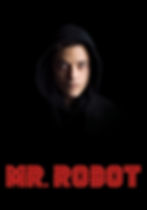
Mr. Robot (2015)
I had to do a full re-watch of Mr. Robot for an article I was ghostwriting. And I loved it. Mr. Robot may be one of the best and most ingenuous examples of second person I have ever come across. Mr. Robot plays with second person the way it should be played with. Who is Elliot (the main character) addressing when he breaks the fourth wall? Is it the audience? Is it another character? The ‘hello friends’ mystery is one of the best parts of that show, and it’s not a gimmick. Instead, it’s an important narrative device that plays a massive part in the narrative. I highly recommend it for anyone seeking inspiration on how to play with the second person POV and break new ground.
You can watch season 1 to 4 of Mr Robot on Amazon

Malcolm in The Middle (2000)
Malcolm in the Middle is a sitcom where the titular character, Malcolm, frequently talks directly to the camera to explain his thoughts, defend his actions, and pass commentary on the characters in his life. Whether it’s a true example of a fourth wall break is up for debate with a Reddit thread usurpingly coming up with their own thought-out, well-articulated, bonkers theories and mainstream media following.
You can watch season 1 to 7 of Malcolm in the Middle on Amazon
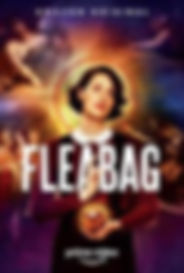
Fleabag (2016)
Fleabag is amazing. It’s funny, dark, and plays with fourth wall breaks, leaving audiences wondering who she’s talking to and who we are. Structurally Fleabag is a close relative to Mr. Robot. It has fewer computers, more family drama, and fewer computers. Fleabag—we never find out her name—is also less of us a superhero and more of a relatable mess.

You (2018)
Yes, I’m including the tv show you. It’s called YOU. It’s basically the poster child for misinformation on second person. Joe neither breaks the fourth wall nor are we Joe, but it feels like we are. It feels like he’s talking directly to us, even though he’s being weird and chatting away to Beck. The Love. And then some other ladies I can’t remember the names of because the third season went off the rails. If you want to watch an enjoyable show and get an insight into how to address the audience through secondary characters, then I highly recommend this show. I recommend introducing the mental head cannon that Joe is Dan from Gossip Girl. He went from being gossip girl to a full-blown serial killer. The actors and the same, and somehow the story checks out narrative-wise.
You, Season 1 on Amazon
You, Season 2 on Amazon
You, Season 3 is available exclusively on Netflix

Sex And The City (1998)
Sex And The City as a second-person narrative is a little bit of a stretch, but it's another show I had to watch for an article. And Carrie Bradshaw does address us, the audience, to some extent through her columns. She even spikes the camera once or twice. The series has its place in the world and I don't regret watching it, but the movies are awful, don't bother.
Sex And The City is available on Amazon

Deadpool (2016) & Deadpool 2 (2018)
Deadpool frequently breaks the fourth wall to chat with the audience. It's funny and quirky and sets the movies apart from the rest of the superhero lineup. As far as fourth wall breaks and second person POV goes, it's not the most out-there and creative version, it's pretty cut and dry, with no truly interesting twists, but it does add flavor.
Deadpool 1 available on Amazon
Deadpool 2 available on Amazon

Paranormal Activity (2007)
Does paranormal activity break the fourth wall? I think it does, maybe. Paranormal activity is pseudo-found footage documentary-style movie that works to trick the audience. It could even be argued that it has more of a second person POV than a fourth wall break. We are the audience being directly addressed by the performers, but we are also a character in the story. The character of the audience.
Paranormal Activity available on Amazon
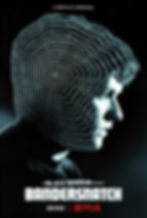
Bandersnatch (2018)
Bandersnatch may have been one of the most boring movies I have ever watched. It functioned much like a Choose Your Own Adventure, with the viewer able to puppeteer the main characters, deciding what kind of serial he should eat and so on. It was so boring. The only enjoyable part was novelty, which I don't think was good enough.
Watch Bandersnatch on Netflix (but also don't watch it, because its bad)
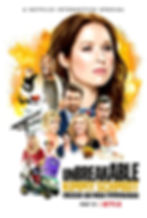
Unbreakable Kimmy Schmidt: Kimmy vs. the Reverend (2020)
Another horribly dull movie that followed the Choose Your Own Adventure gamification format. I honestly can't even remember what this movie was about and I refuse to rewatch it or even read a blurb to find out. Sorry.
Watch the Unbreakable Kimmy Schmidt: Kimmy vs. the Reverend on Netflix (but also don't watch it, because its bad)
